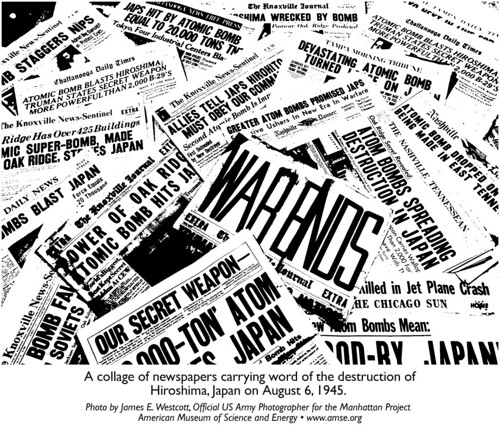 A headline is by far one of the most important elements of a story. Imagine a world with no headlines. Scanning the paper in the morning while sipping on a cup of coffee would no longer be such an easy and enjoyable task. Without headlines, the first task (out of many) would become being able to decipher where each story began and ended; Then, the reader would have to read at least the first paragraph to get some sort of grasp on what the story may be about and whether or not it interests them enough to continue reading. Many readers would find themselves giving up at this point.
A headline is by far one of the most important elements of a story. Imagine a world with no headlines. Scanning the paper in the morning while sipping on a cup of coffee would no longer be such an easy and enjoyable task. Without headlines, the first task (out of many) would become being able to decipher where each story began and ended; Then, the reader would have to read at least the first paragraph to get some sort of grasp on what the story may be about and whether or not it interests them enough to continue reading. Many readers would find themselves giving up at this point.Headlines are created in order to capture the readers attention by providing them with the most simple summary of a story while still giving enough detail and facts to allow them to decide if it's worthy of a read or not. Headlines also, as mentioned before, add to the layout of a page by providing the reader a sense of where to begin and end a story. Often in a newspaper, the more important stories will receive headlines with a bigger font size in order to make sure to capture the reader's attention more so than other stories. This also helps narrow down the selection of stories the reader should spend time reading.
It is important to create a well written headline in order to make sure that it fulfills its purpose of attracting readers. A well written headline should include an active verb, a subject, accuracy, an appropriate tone, simplicity, clarity, and immediacy. All of these elements add up to build a presentable headline. In order to ensure that the reader has respect for the writer creating the headline, it must be void of any grammatical errors. This should be an obvious consideration when constructing a headline, however, errors do go unnoticed from time to time.
A very useful tip mentioned in an article by Sharon Burnside in the textbook "Creative Editing for Canadian Journalists" on page 173, is that "news headlines should pass the crowded room test. If you shouted the headline into the open door of a crowded room, would the people in the room understand what the story is about?"
The art of crafting a well written headline is essential for any journalist. Many websites provide further information on how to create a headline. One such site is JPROF.

Second Paragraph- Run on sentance- "in order to make sure to capture" the reader's attention.----> "in order to capture the readers attention"- cut out the "to make sure" bit.
ReplyDelete3rd paragraph- List- "active verb(s)"---> make sure your lists agree in tense. Making "an active verb" singular would work.
Otherwise fantastic!
It does say "in order to capture the readers attention", doesn't it? Or am I missing something?
ReplyDeleteJust a note:
ReplyDeleteThe phrase "in order to" is wordy and should be reduced to just "to". When writing always leave out the words "in order" in this phrase as they are not needed and they make the sentence longer than it should be. This is not my rule, but a rule found in many English grammar books.